Export Office: 21Floor, No.5 Nanhai Zhi Road,Qingdao, Shandong ,China
Work Shop: Beian Industrial zone, Qingdao,Shandong,China
+86 532 88550858
Martin
Inquiry now
--By Qingdao FLuido Industrial Co., Ltd
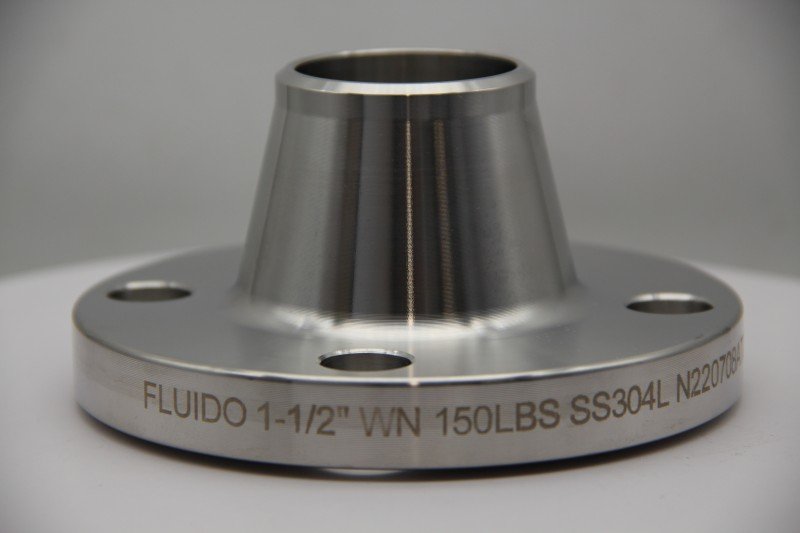
Content
I. Introduction
A. Definition of butt weld flanges
B. Importance of butt weld flanges in piping systems
II. Types of butt weld flanges
A. Weld neck flanges
B. Slip-on flanges
C. Socket weld flanges
D. Lap joint flanges
III. Advantages of butt weld flanges
A. Strong and leak-proof connection
B. Ideal for high-pressure and high-temperature applications
C. Easy to install and weld
IV. Applications of butt weld flanges
A. Oil and gas industry
B. Chemical processing plants
C. Power generation facilities
D. Water treatment plants
V. Installation and welding process of butt weld flanges
A. Preparation of pipe ends
B. Fitting the flange onto the pipe
C. Welding the flange to the pipe
D. Inspection and testing
VI. Maintenance and care of butt weld flanges
A. Regular inspection for signs of wear or corrosion
B. Proper cleaning and maintenance procedures
C. Replacement of worn-out flanges when necessary
VII. Conclusion
I. Introduction
A. Definition of butt weld flange
A butt weld flange is a flange welded directly to a pipe or pipe fittings. They are commonly used in high-pressure and high-temperature applications to provide robust and leak-proof connections. In some cases, the inside of the pipe needs to be smooth, this type of flange is also preferred. The junction is free of any protrusions and does not cause turbulence or hinder fluid flow.
B. Importance of butt weld flanges in piping systems
1. Strength and durability: Welding to the pipe or fittings, and butt welded flanges provide a strong connection in the piping system, enabling the pipeline to withstand high pressure and temperature, and to be effective for a long time, avoiding leaks and losses.
2. Leak-proof connection: Butt weld flanges create a tight seal between pipes, preventing any leakage of fluids or gases from the piping system. This helps to maintain the integrity of the system and prevent any potential hazards.
3. Versatility: Butt weld flange can be used in various conditions, to connect pipes of different materials(like carbon steel pipes, stainless steel pipes, iron pipes, etc.,) and different sizes, especially for big sizes, so it is used in a wide range applications.
4. Cost-effective: While butt weld flanges may have a higher initial cost compared to other types of flanges. But due to their Less damage, less leakage, and less maintenance, their durability and reliability in high-pressure, high-temperature applications, they offer long-term cost savings.
II. Types of butt weld flanges
A. Weld neck flanges: Welding the neck to the pipe end, provides a strong and reliable connection. They are ideal for high-pressure applications.
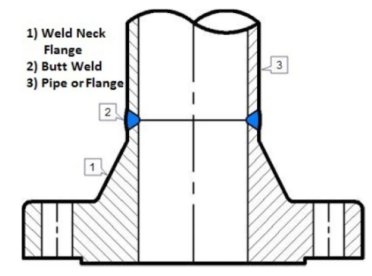
B. Slip-on flanges: Slide over the pipe to the suitable place and then weld the flange inner with the pipe surface. They are easier to align and install compared to weld neck flanges. The working pressure is less than weld neck ones.
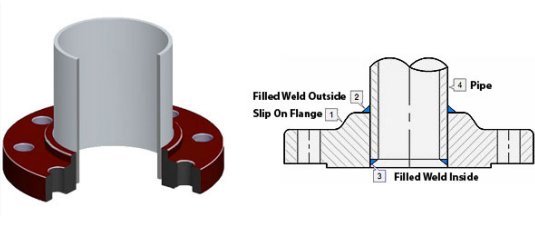
C. Socket weld flanges: These flanges are designed to be welded directly to the pipe using a socket weld connection. They are commonly used in smaller pipe sizes and for applications with high pressure and temperature.
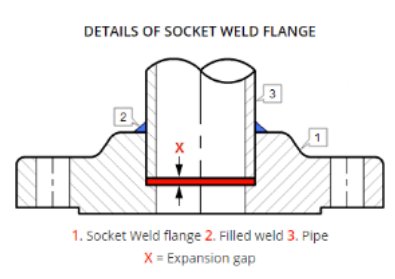
D. Lap joint flanges: These flanges are used with a stub end, allowing for easy alignment and assembly. They are ideal for applications where frequent dismantling is required. They are usually used in occasions that require frequent installation and disassembly.
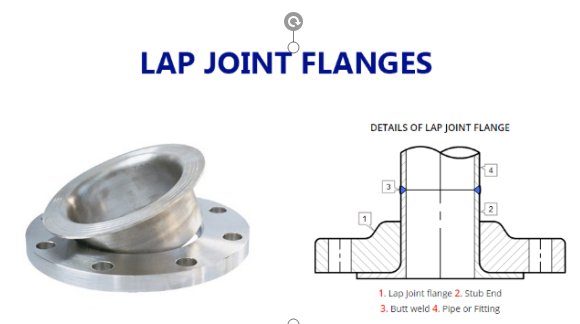
III. Advantages of butt weld flanges
A. Strong and leak-proof connection
The strong and leak-proof connection allowed the pipeline can work under high pressure and high temperature without leakage.
B.Ideal for high-pressure and high-temperature applications
This makes them a popular choice for industries such as oil and gas, chemical processing, and power generation. The sturdy construction of butt weld flanges allows them to withstand extreme conditions without compromising the integrity of the connection.
C. Easy to install and weld
This makes them a convenient option for projects that require quick and efficient installation.
IV. Applications of butt weld flanges
A. Oil and gas industry
C. Power generation facilities
D. Water treatment plants
V. Installation and welding process of butt weld flanges
A. Preparation of pipe ends
l Cut the pipe ends to the required length and ensure there are no any debris or foreign objects.
l For weld neck flange, also need to bevel the edges of the pipe ends to the specified angle to fit with the flange neck.
l Check and ensure the pipe ends are straight.
B. Fitting the flange onto the pipe
l For the weld neck flange, put the flange neck onto the pipe end, ensuring that it sits flush against the beveled edges. For slip-on flange, slip the flange over the pipe to the suitable place.
l Use a clamp or tack weld to hold the flange in place and maintain alignment during the welding process.
l Double-check the alignment and fitment of the flange before proceeding with the welding.
C. Welding the flange to the pipe
l Use the appropriate welding technique (such as TIG or MIG) to weld the flange to the pipe, following the recommended welding parameters.
l Ensure that the weld is of high quality and fully penetrates the joint to create a strong and leak-proof connection.
l Allow the weld to cool down gradually to prevent any distortion or cracking in the joint.
D. Inspection and testing
l Inspect the welded joint for any defects, such as cracks, porosity, or incomplete fusion.
l Conduct non-destructive testing, such as dye penetrant testing or radiographic testing, to ensure the integrity of the weld.
l Perform pressure testing to verify the leak-tightness of the joint and confirm the overall quality of the installation.
VI. Maintenance and care of butt weld flanges
Check the flange welding site or flange body regularly for signs of rust, cracks and corrosion. Once found, it should be handled in a timely manner to avoid causing leakage, endangering environmental safety, or causing project shutdown.
Clean the flange regularly, using the correct cleaning agent to remove dirt, debris or other contaminants that may cause corrosion or wear of the flange. And apply a lubricant or protective layer to help prevent rust and extend the service life of the flange.
If the inspection finds that the flange is worn, corroded or damaged beyond repair, replace it promptly to avoid any potential leakage or failure. The use of high-quality flanges can extend the service life and reliability of the system.
Butt weld flanges are an essential component in piping systems, providing a strong and leak-proof connection between pipes. They offer numerous benefits such as durability, ease of installation, and resistance to high temperatures and pressures. By choosing butt weld flanges, you can ensure the safety and efficiency of your piping system.
Export Office: 21Floor, No.5 Nanhai Zhi Road,Qingdao, Shandong ,China
Work Shop: Beian Industrial zone, Qingdao,Shandong,China
+86 532 88550858
Martin
© 2020 Qingdao Fluido Industrial Co.,Ltd. All Rights Reserved. Qingdao fluido valve

